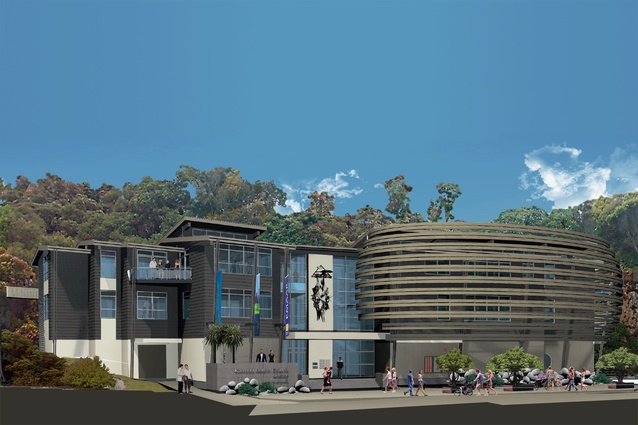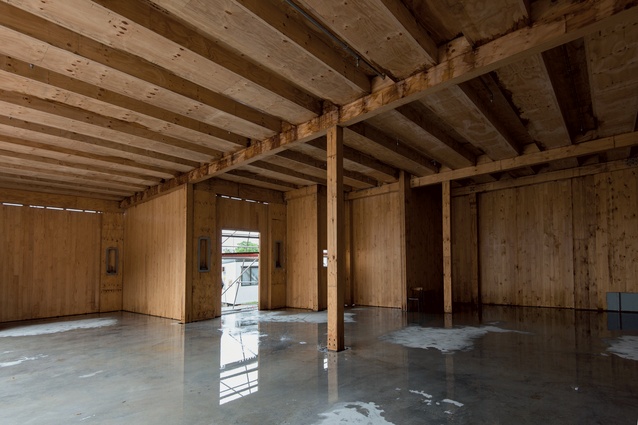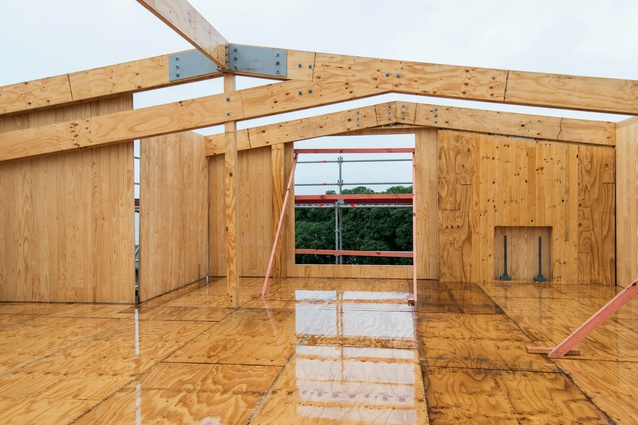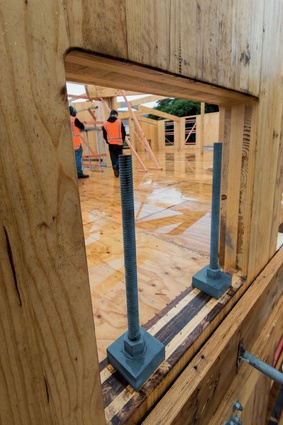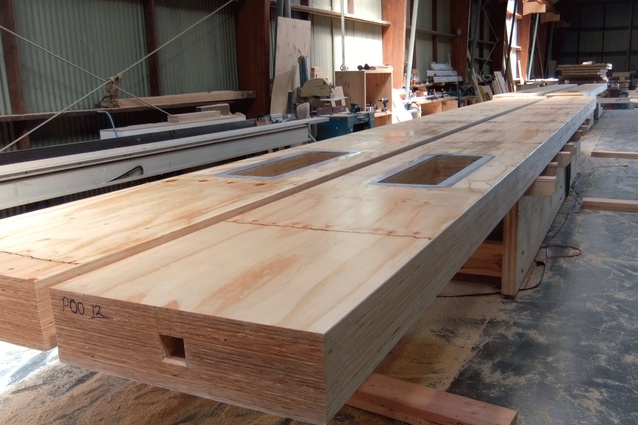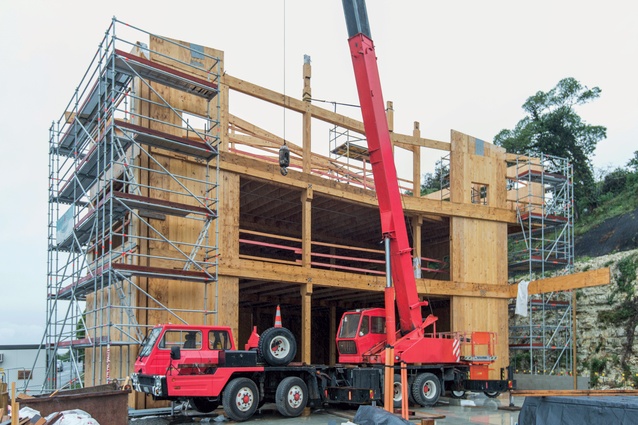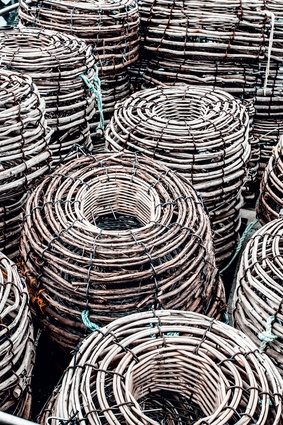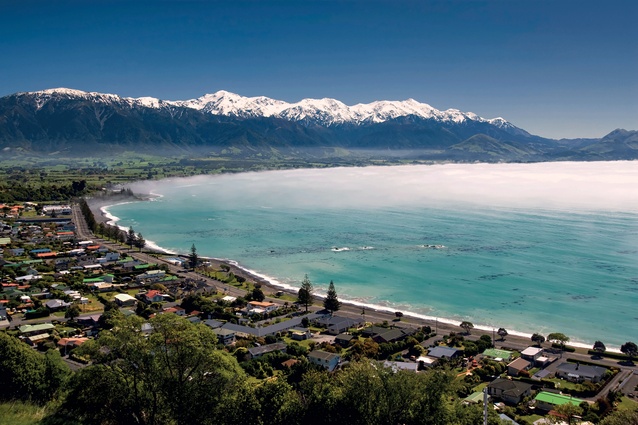Kaikoura’s treasure
Inspired by its coastal location, this three-storey ‘craypot’ building is constructed entirely in timber and is the first in the world to utilise shear walls made of CLT and LVL.
Some would call it daring, others pioneering, but whatever you make of it, Kaikoura District Council definitely did not take the road well travelled when it set out to develop a building of many purposes; one that would incorporate a museum, library, commercial office space and the council’s new headquarters.
And that’s not all – the council envisaged a building that would be seismically strong, sustainable, operate as a tourist attraction in its own right, and one that could be built on a shoestring budget. The solution was a multifaceted approach: the council took on the role of project manager, and made the decision early on to construct the three-storey building entirely in timber. It also wanted to support the regional economy by using local labour.
Contract project manager Stuart Chadwick said one of the key ways to keep costs down was involving the consultants and manufacturers early in the process so designs could be tailored to suit the specific needs of this project, and a collaborative approach could be adopted throughout the design and construction process.

What transpired from this collaborative process was a world-first shear wall system, an extremely low construction cost per square metre, and a building that is set to be a regional icon in this rural seaside town for both locals and tourists alike.
As few elements of this project were done conventionally, it seems fitting that Chadwick engaged a landscape architect as opposed to an architect to be involved in developing the building concept. Rough and Milne landscape architect Hannah Ayres got the job and created the unique craypot concept, which will see half the building’s façade covered in an abstracted timber craypot sculpture.
“The iconic craypot sculpture serves its purpose as both a work of art symbolising the place that hold’s Kaikoura’s treasure, and as a louvre structure to shade the building interior,” Ayres said. “The building and landscape are designed together as one continuous place that brings the inside out and the outside in … the overall concept is very much inspired by the context of Kaikoura and its distinct natural and cultural environment.”
The 2333m2 building sits on limestone on a conventional reinforced concrete foundation at a shallow depth. The foundation and floor slab are the only areas of concrete in the entire structure. “As New Zealanders, we are great at building in concrete, but not so good at building in timber,” Chadwick said.
“Each timber building is a first in its own way. This building utilises all the engineered timber products available; CLT, LVL, LVL and CLT combined, and Glulam. It also utilises the latest technology from the University of Canterbury, and a bit of Kiwi engineering.”
When Progressive Building visited the site in late May, approximately half of the structure was erected. “To get to this stage we have had only four guys on site for two months. This will go up to five or six guys, plus subcontractors, for the entire construction programme,” Chadwick said.
This was possible because all beams, columns and wall panels were prefabricated offsite and delivered as “finished’ components. The post and beam gravity structure is made of laminated veneer lumber (LVL), while the walls, or the lateral structure, are cross-laminated timber (CLT) and LVL. They are post-tensioned to create “rocking shear walls”.
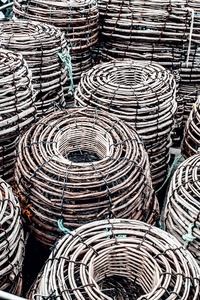
“This is the first time in the world a CLT and LVL combination has been used to make shear walls,” Chadwick said. The walls are mainly CLT, but LVL, which is significantly stronger, was added to areas where there was maximum strain to provide added strength; in each end of the walls and within the core of the walls where the largest post-tensioning strain is.
Steel post-tensioning cables run through the interior of the walls, which are connected to 500mm steel brackets that link the walls and the foundation, and are visible on the bottom of the exterior and interior of the walls. They are anchored to the foundation.
Engineer Andy Reid described this use of PRESSS technology as a “hybrid post-tensioned connection. Mild steel hold-down bolts and post-tensioned height bars, almost like reinforcing rods, run internally through the wall and clamp it down from the top.” The steel brackets, or dissipater rods, linking the walls and foundation stretch in a seismic event and dissipate energy allowing the walls to move.
Xlam project engineer Sam Leslie said there were 15 rocking shear walls in the building, which provide all the seismic bracing and rock, giving the building some ductility. “The dissipator rods are the only parts of the structure that will be damaged in a seismic event. They are replaceable; a large focus of the design was damage avoidance. Following a seismic event these rods can be quickly replaced and the building operational,” Leslie said.
“While we introduce rocking into the walls, you do not want the rest of the building rocking with them. The connections to the floors have been detailed so the walls can rock independently to the floors. A lot of attention went into minimising damage by isolating the rocking. The cladding and external walls are also CLT, but they were not designed to brace the building, only to take wind loadings.”
Construction manager Bruce Ensor, a Kaikoura local, said the new systems were a learning curve for the construction team. “When the first 15-metre shear wall arrived on site it was like a baptism by fire,” he said. It took three months to manufacture the panels and beams, and during that time the concrete foundation work was completed on site.
“Because we were standing ‘finished timber walls’, the time it took to get them up was considerably shorter than if they had been concrete. Timber is about a quarter of the weight of concrete,” Ensor said.
The Potius flooring is a stressed skin panel system fabricated using LVL, which engineer Gavin Robertson describes as a timber version of a concrete double-T flooring system. “The floor acts as a diaphragm between the shear walls,” Robertson said. “Unlike most commercial buildings, there is no concrete in the flooring systems – in fact, there is no concrete above the ground floor in this building.”
The Potius roofing panels are made from a similar system; they are pre-insulated with polyurethane spray foam. The internal finish, which provides the ceiling lining, is a pre-primed MDF surface.
The exterior cladding also utilises CLT, a 90mm variety. Chadwick said the decision to use timber was not entirely related to the seismic and structural strength of the material; it was also about sustainability. “The hole I leave in the earth constructing this sort of building out of pine trees is nothing compared to the huge hole I would leave if I built this in concrete and steel.”
Nelson Pine sales engineer Andy Van Houtte said New Zealand as a country was slowly waking up to the idea that wood was grown here, and therefore should be used as a construction material more often. “When you think about it, in the 50-year lifespan of this building, you could grow two more,” he said.
Chadwick described the building as: “a giant Meccano set, not just in the construction itself, but in cost engineering too”. Because this type of construction is rarely undertaken in New Zealand, he said it was a useful tool for quantity surveyors to utilise in the future costing of projects.
‘The Craypot’ came in at a cost of $2001.00 per square metre, a fair whack less than some other conventional builds. The urban streetscape of Kaikoura’s main drag will extend seamlessly into the building’s ground floor atrium and museum area; upstairs Environment Canterbury will lease offices next to the library, and Kaikoura District Council will tenant the top floor. Construction is expected to be complete in October this year.

